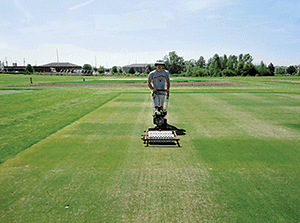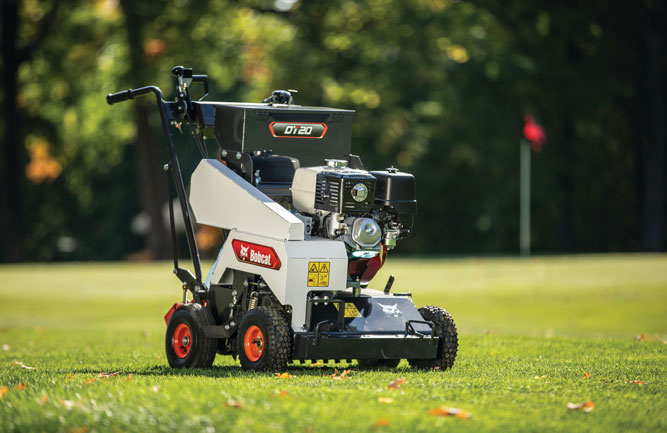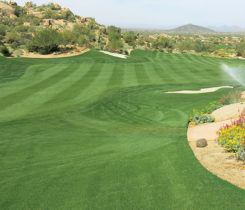Overseeding, N Rate and Traffic in Tifeagle Bermudagrass
By Phillip Bruner and Beth Guertal, Ph.D.
Hybrid bermudagrass (Cynodon dactylon x C. transvaalensis Burtt-Davy) putting greens are often overseeded with a cool-season species at the onset of fall dormancy. Little is known about the impact of winter play on the overseeded turfgrass or bermudagrass as it emerges from winter dormancy.
The objective of this research was to examine the combined and separate effects of overseeding, traffic and nitrogen (N) rate on the performance of a Tifeagle hybrid bermudagrass putting green overseeded with Poa trivialis. The two-year study was conducted in Auburn, Ala., with N rate 0, 0.1, 0.2 or 0.4 lbs. N 1000 square feet per month from November to May, overseed (yes or no) and traffic (yes or no).
Traffic was imposed using a walk behind greens mower with two drums fitted with golf spikes, with a limited slip differential between the drums. Traffic was applied twice a week from January 1 to April 30 each year.
In general, highest turfgrass color and quality were achieved at the highest N rate. Overseeding did not provide improved traffic tolerance (as determined by the quality and performance of the bermudagrass) compared to non-overseeded bermudagrass. However, overseeding did slightly improve turf quality at the end of winter, but only at the highest N rate. The presence of the overseed significantly reduced bermudagrass shoot density, and traffic also reduced shoot density, both in the Poa trivialis and bermudagrass.
Overall, traffic affected the quality of the bermudagrass the most, more so than the presence of the overseed or N rate. In the two years this study was conducted in Auburn the bermudagrass rarely went fully dormant, and there was often bermudagrass growth in warmer periods of the winter. The presence of an overseed and traffic had negative effects on bermudagrass, and they were observed into the spring transition period. Winter applications of N are needed to help counteract this effect.
Phillip Bruner and Beth Guertal, Ph.D., Crop, Soil and Environmental Sciences, Auburn University. Beth Guertal can be contacted at guertea@auburn.edu for more information.
Photo: Beth Guertal











